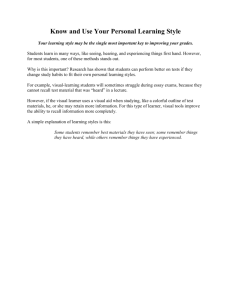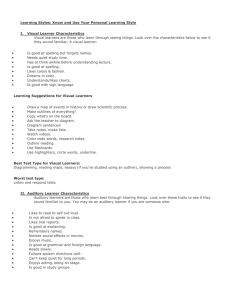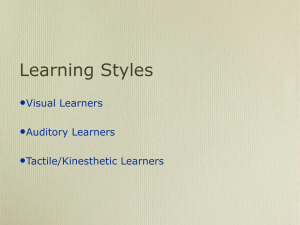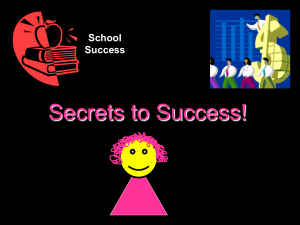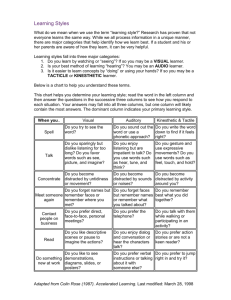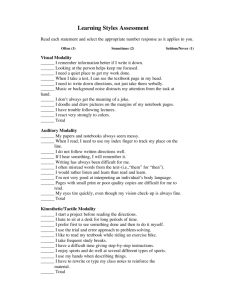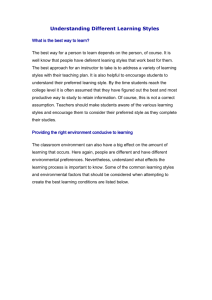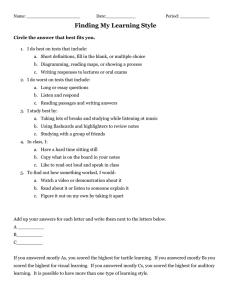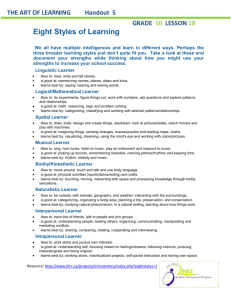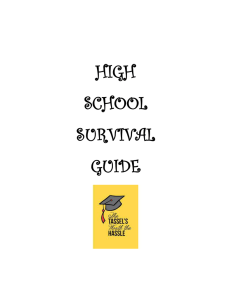Learning Styles
advertisement
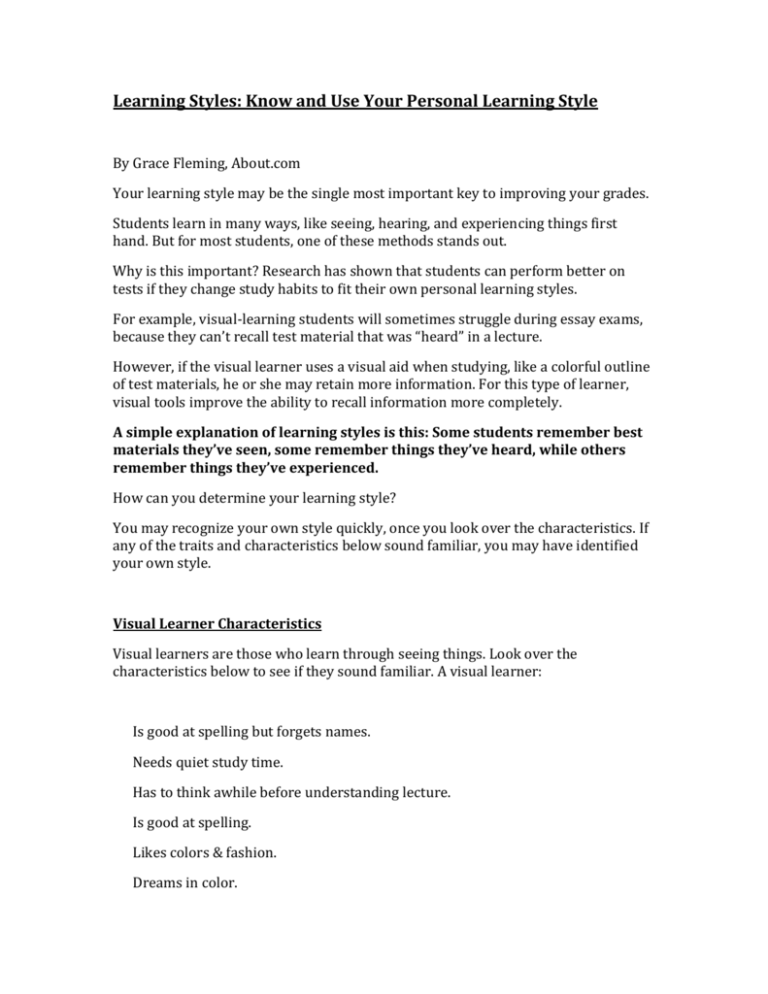
Learning Styles: Know and Use Your Personal Learning Style By Grace Fleming, About.com Your learning style may be the single most important key to improving your grades. Students learn in many ways, like seeing, hearing, and experiencing things first hand. But for most students, one of these methods stands out. Why is this important? Research has shown that students can perform better on tests if they change study habits to fit their own personal learning styles. For example, visual-learning students will sometimes struggle during essay exams, because they can’t recall test material that was “heard” in a lecture. However, if the visual learner uses a visual aid when studying, like a colorful outline of test materials, he or she may retain more information. For this type of learner, visual tools improve the ability to recall information more completely. A simple explanation of learning styles is this: Some students remember best materials they’ve seen, some remember things they’ve heard, while others remember things they’ve experienced. How can you determine your learning style? You may recognize your own style quickly, once you look over the characteristics. If any of the traits and characteristics below sound familiar, you may have identified your own style. Visual Learner Characteristics Visual learners are those who learn through seeing things. Look over the characteristics below to see if they sound familiar. A visual learner: Is good at spelling but forgets names. Needs quiet study time. Has to think awhile before understanding lecture. Is good at spelling. Likes colors & fashion. Dreams in color. Understands/likes charts. Is good with sign language. Learning Suggestions for Visual Learners Draw a map of events in history or draw scientific process. Make outlines of everything! Copy what’s on the board. Ask the teacher to diagram. Diagram sentences! Take notes, make lists. Watch videos. Color code words, research notes. Outline reading. Use flashcards. Use highlighters, circle words, underline. Best Test Type for Visual Learners: Diagramming, reading maps, essays (if you’ve studied using an outline), showing a process Worst test type: Listen and respond tests Auditory Learner Characteristics Auditory learners are those who learn best through hearing things. Look over these traits to see if they sound familiar to you. You may be an auditory learner if you are someone who: Likes to read to self out loud. Is not afraid to speak in class. Likes oral reports. Is good at explaining. Remembers names. Notices sound effects in movies. Enjoys music. Is good at grammar and foreign language. Reads slowly. Follows spoken directions well. Can’t keep quiet for long periods. Enjoys acting, being on stage. Is good in study groups. Auditory Learners Can Benefit from: Using word association to remember facts and lines. Recording lectures. Watching videos. Repeating facts with eyes closed. Participating in group discussions. Using audiotapes for language practice. Taping notes after writing them. Worst test type: Reading passages and writing answers about them in a timed test. Best test type: Auditory Learners are good at writing responses to lectures they’ve heard. They’re also good at oral exams. Kinesthetic Learner Characteristics Kinesthetic learners are those who learn through experiencing/doing things. Look over these traits to see if they sound familiar to you. You may be a kinesthetic learner if you are someone who: Is good at sports. Can’t sit still for long. Is not great at spelling. Does not have great handwriting. Likes science lab. Studies with loud music on. Likes adventure books, movies. Likes role playing. Takes breaks when studying. Builds models. Is involved in martial arts, dance. Is fidgety during lectures. Kinesthetic Learners Can Benefit from: Studying in short blocks. Taking lab classes. Role playing. Taking field trips, visiting museums. Studying with others. Using memory games. Using flash cards to memorize. Worst Test Type: Long tests, essays. Best Test Type: Short definitions, fill-ins, multiple choice.
